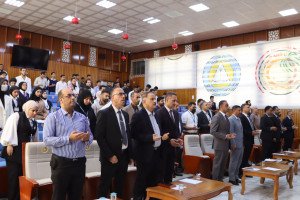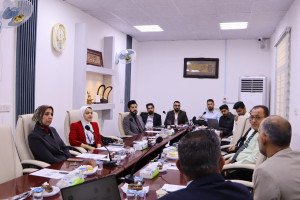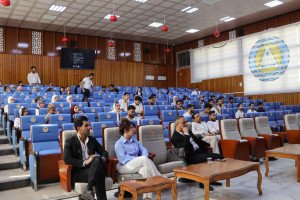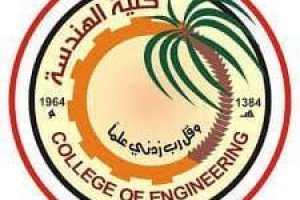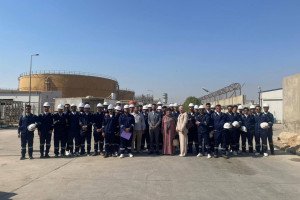
Master's thesis in the College of Engineering, University of Basra discusses the division of carbon dioxide with the help of plasma based on artificial intelligence techniques
The master's thesis of the student Alia Hussein Abbas was discussed in the College of Engineering, University of Basra, Department of Computer Engineering, entitled
The division of carbon dioxide with the help of plasma based on artificial intelligence techniques
Increasing carbon dioxide (CO2) levels beyond their natural limits lead to significant environmental problems such as rising temperatures, ozone depletion, and climate change. Scaling up the generation facilities and enabling policies around the creation of renewable energy sources is crucial in reducing the overall CO2 emissions. An energy aspirational target is to use the CO2 that is emitted and repurpose it to produce clean fuels. But before CO2 can be usefully turned into friendly fuel, it has to be converted to carbon monoxide (CO). This transformation requires a lot of heat energy, along with specific pressure and temperatures to be met.
The most popular separation technique is known as microwave plasma, which operates under low temperatures and atmospheric pressure. This thesis reviews the existing large-scale industrial reactors that dissociate CO2 gas and suggests the designs of a lab-scale microwave plasma reactor and its implementing processes. COMSOL Multiphysics has served as a design and simulation tool for the 2D and 3D geometry of the reactor to ensure proper conversion under target conditions. The 3D simulation was aimed at better understanding the hot spots phenomenon in a microwave reactor and its effect on the overall reaction. The problem of stability of the plasma was looked at as a function of power and gas flow rates, as well as the breaking down of the CO2 gas and its conversion concentrated on hot spots.
The CO2 conversion percentage rises as the power gets increased at the constant flow rate; however, at that specific power level, if the gas flow rate becomes increased, then the conversion percentage drops. The input power into the reactor influences the plasma density directly. The generation of hot spots increased the gas conversion rates.
The design, which was suggested, was executed with the aid of AI techniques like ANFIS and ML to create the reactor model and the control unit. These techniques modify certain controller parameters such as the amounts of flow rate, position, and time of conversion. AI technologies ANFIS and ML were applied to make decisions regarding CO2 plasma generation and conversion. Plasma control was optimized in real time using Iterative Learning Control (ILC)

